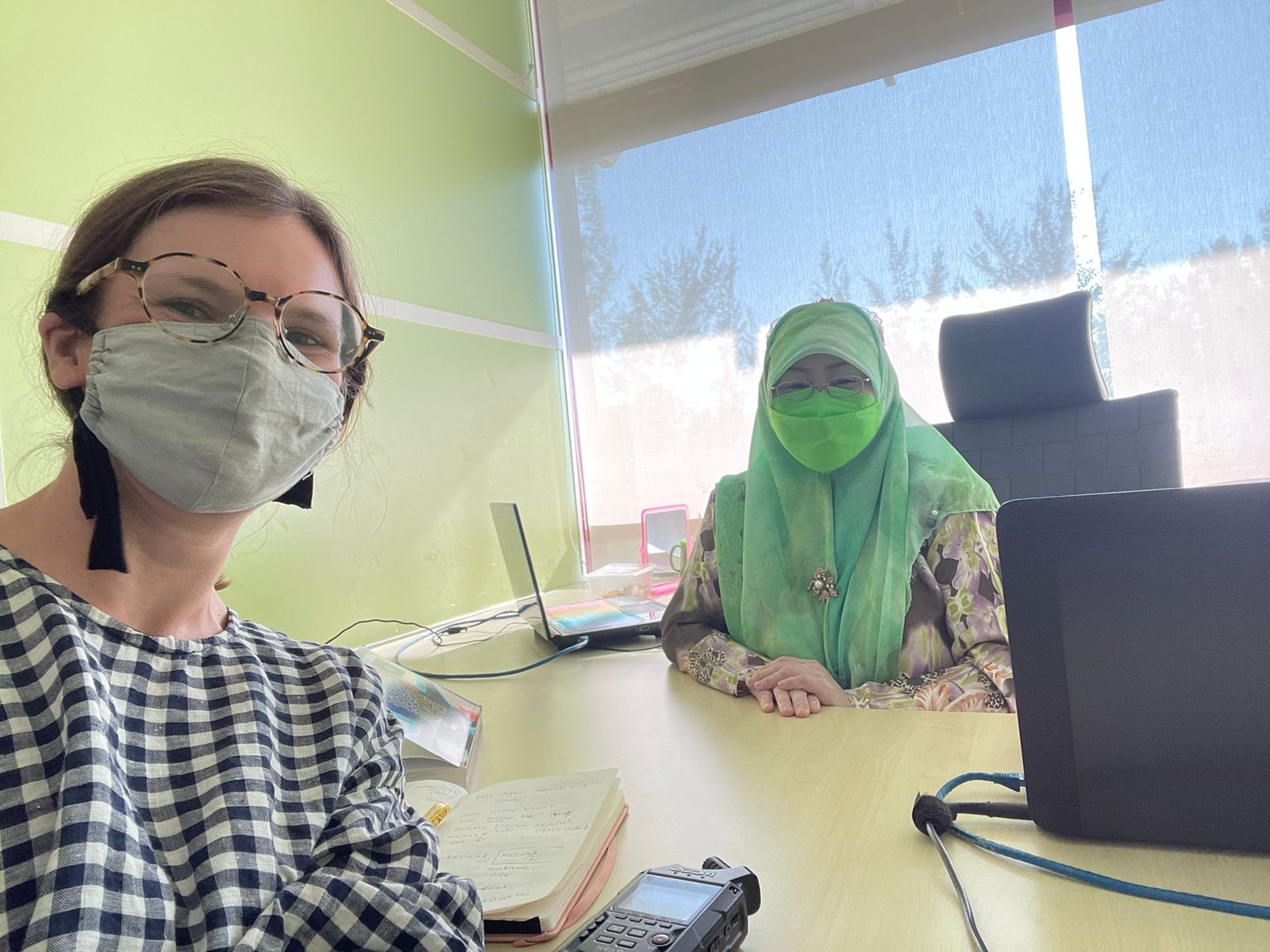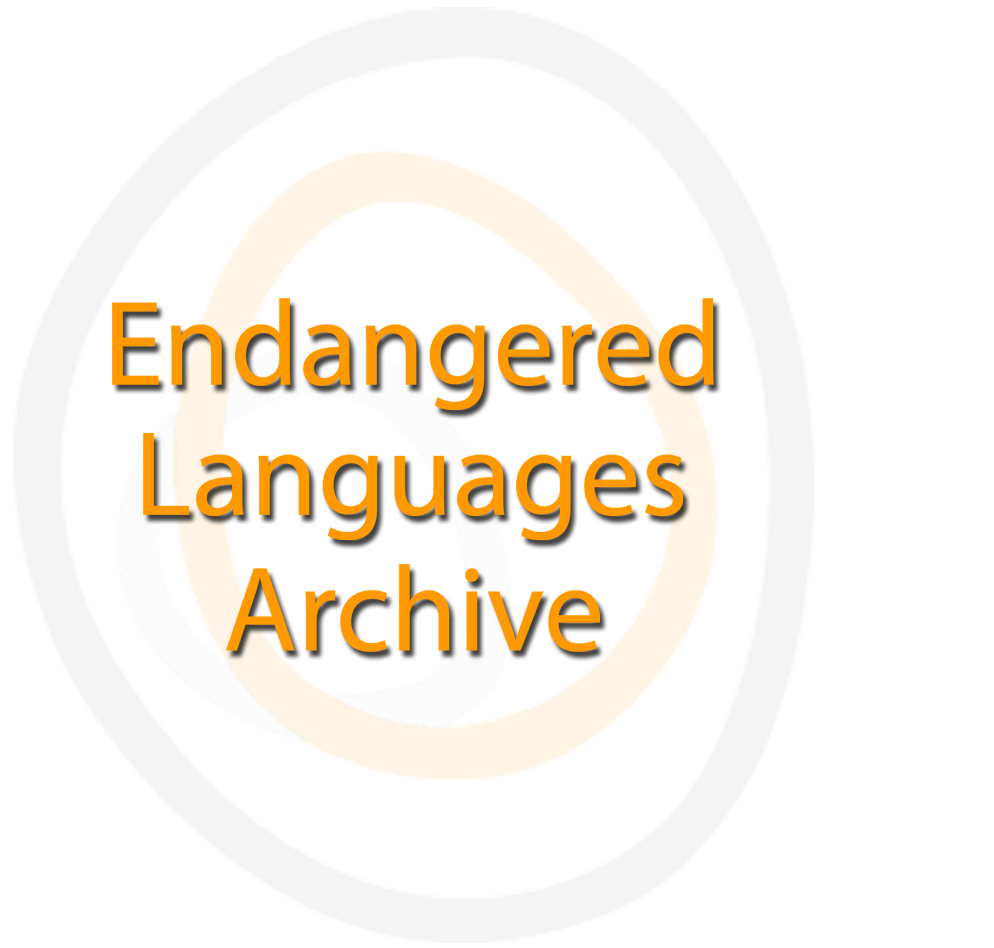A documentation of Belait, an Austronesian language of Brunei

Holly Drayton (researcher) and Noor Alifah Abdullah (teacher of Belait) working on Belait elicitation at Universiti Brunei Darussalam in January 2022. Photo by Holly Drayton. Click on image to access collection.
| Language | Belait |
| Depositor | Holly Drayton |
| Affiliation | Universiti Brunei Darussalam |
| Location | Brunei Darussalam |
| Collection ID | 0662 |
| Grant ID | SG0715 |
| Funding Body | ELDP |
| Collection Status | Collection online |
| Landing page handle | http://hdl.handle.net/2196/3cedd0c8-64b4-5768-9e38-5552927e2f1g |
Summary of the collection
This deposit provides a documentary corpus of audio-visual texts in the Belait language, funded by an ELDP small grand in 2022-2023. The deposited material includes a range of naturalistic texts, in addition to elicited texts focusing on the voice system. Information about each session is provided in English and Malay.
Group represented
The group represented in this deposit are the Belait people of Brunei, the small Islamic sultanate located between two Malaysian provinces, Sabah and Sarawak, on the north coast of Borneo. Speakers of the Belait language are scattered across a number of areas around the country and, as such, do not retain a central location. This is one key feature of the fast decline in the number of speakers, which is estimated to be around 200 in 2022. The Belait group is predominantly Muslim and identify as Malay, although there may be a small number of non-Muslim Belait people who retain stronger links to the distinct Belait identity. This documentation is primarily based on the Labi dialect which was originally spoken in and around Labi village, however, speakers from several other villages are also consulted.
Collection contents
The deposit will contain 20.5 hours of recorded language in audio-visual format: – 14 hours of naturalistic language – 6 hours of elicited language use -0.5 hours of informed consent 8 hours of language use will be provided with time-aligned transcription and translation into English and Malay. 5 hours of language use will be provided with time-aligned transcription and translation into English and Malay in addition to additional morpheme-by-morpheme glossing in English.
Acknowledgement and citation
Endless thanks to Noor Alifah and Dr Yabit Alas for their help in getting the project running. Other contributors will be named in the metadata.
To refer to any data from the collection, please cite as follows:
Drayton, Holly. 2022. A documentation of Belait, an Austronesian language of Brunei. Endangered Languages Archive. Handle: http://hdl.handle.net/2196/4cede0p9-32c4-5967-9e38-5882928e2g3f. Accessed on [insert date here].


